This is part four of our video series where we demonstrate the various sharpening techniques and tools essential to properly maintain your knives. In this video demo, we demonstrate the proper way to sharpen a single edged Japanese knife. Typically, yanagi, deba and usuba knives have a one sided edge.
Monthly Archives: August 2013
Michael Armstrong – Executive Chef, Dream Hotel New York
We had an opportunity to sit down with Chef Michael Armstrong to talk about his culinary influences, approach to menu development and favorite spots to eat in New York and Las Vegas.
Tell us a little about where you’re from and how you got into cooking initially.
I grew up outside of Seattle Washington and was interested in food since I was a kid, experimenting with Top Ramen noodles in the kitchen and throwing every spice from the shelf and any condiment from the refrigerator in there to see what the results were (most were pretty bad) but I liked the experimental process. By 9th grade I knew I wanted to cook and my step-mother helped spark my interest with home cooking for the family. I just felt really comfortable in the kitchen, it seemed like the right thing to do.
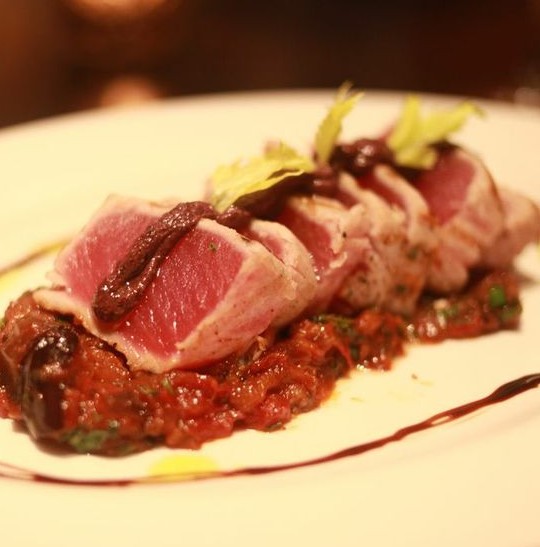
You’ve worked in a variety of kitchens over the years. Are there certain chefs you worked with who you would consider mentors or who influenced your culinary style?
I definitely have three distinct mentors. Matt Wallop, the first Chef I ever worked with, really taught me the fundamentals of cooking, combining flavors, and working with some finesse. He was really passionate about food and helped bring that out of me too. And working with him for two years before going to culinary school prepared me for my education. Quite simply, I owe it all to him and I still look up to him to this day. The second Chef, Mark Andelbradt, taught me much more about management, being a leader and understanding costs and the systems needed to run a successful kitchen. He taught me that when you walk around your kitchen, you’re looking at dollar signs, not just food. The third Chef mentor, Ralph Scamardella, is my current boss at TAO group. He’s given me a lot of opportunity to grow within our company, multiple times, and supported me when others questioned my leadership. He is a huge reason for my current success. It is comfortable to develop as a Chef when you know your leader has your back and supports you and gives direction, but at the same time, lets you run your own kitchen and gives you the opportunity to be creative.
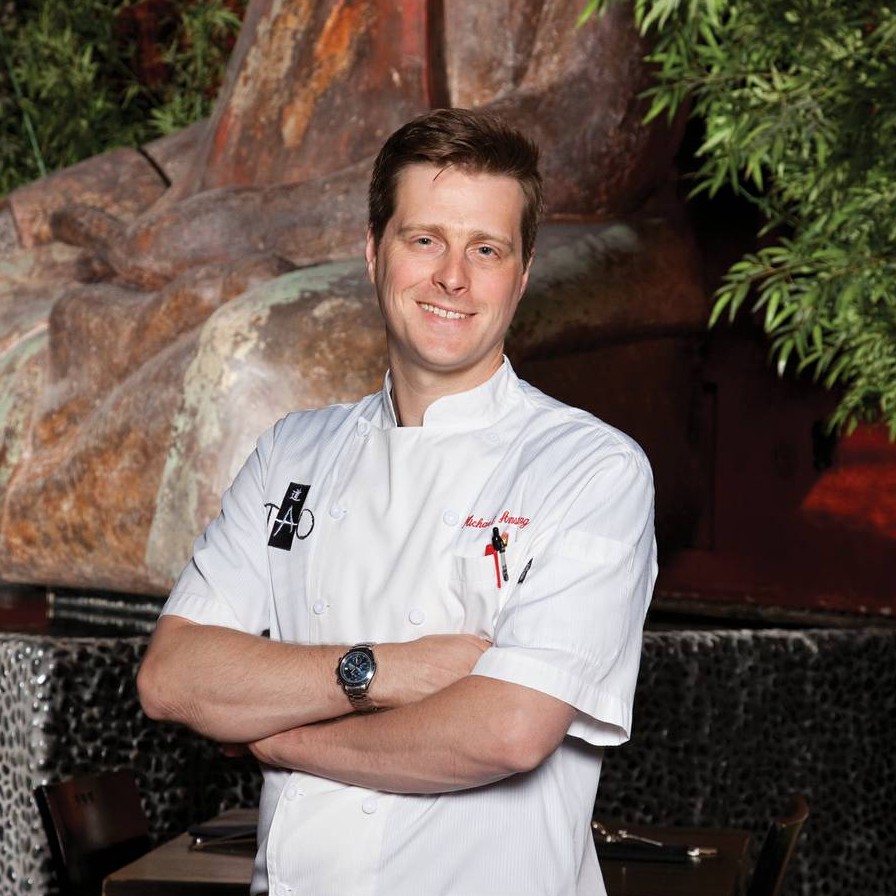
How would you describe your culinary style?
It’s tough because my style is still developing, I’ve worked primarily with Asian food forthe last 7 years, and now I’ve broken away from that and can do whatever I want which is very exciting. Culinarily speaking, I’m most passionate about Japanese food and Mexican food, which don’t really go together at all! It’s fun to have a variety of experience and be versatile enough to work with different cuisines. I would describe my style as taking fresh twists on classic techniques. It’s important to know the history of a cuisine and specific techniques before messing with them to give them a modern look and feel.
How do you approach menu development? Is there a dish or dishes you’ve developed which you are very proud of?
Most of the menu development I have done is specific to a concept and not necessarily just whatever I want to do, which I think is good because it’s more difficult. The most important things to me when developing a menu are cost effectiveness and knowing your clientele. There are lots of chefs out there that can create great dishes, but let’s be honest, the business is about making money too, you can make the best food in the world, but if you can’t keep your doors open, what’s the point? And you have to know your clientele. One thing I’ve learned, is how to make food that sells in your restaurant. Too many chefs are stubborn and get so caught up in making the food they want to make for themselves, but if your guests aren’t buying it, you have to flip the script.
There was a dish at TAO Vegas that I developed with our wok chef, it was a Thai style seafood fried rice, pretty simple with fresh tomatoes, thai chilies, Thai basil, egg, shrimp, lobster, and scallop with fresh lime. Fried rice specials were great there because it’s an easy sell and has a relatively low food cost. The first weekend we ran it, we sold 80-90 orders each night, it was crazy, almost one on every table. I was really happy with that one.
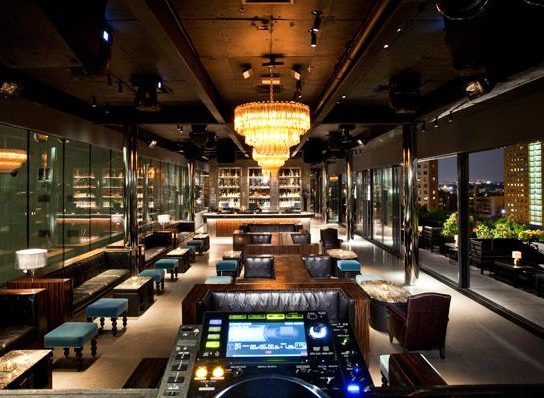
Any dishes which didn’t work so well?
There’s one infamous dish of mine from TAO that comes to mind. I was trying to do something different for the holidays and take something American and make it Chinese, so we did roast turkey, but Peking duck style. So we roasted it and served the breast with crispy skin, and took the leg meat and made a fried rice with dried cherries and roasted chestnuts. I thought it was cool, and we actually got some local press on it as a unique holiday dish. We ran it as a special for a few weeks, and one of our owners came in and I decided to serve it to him, and he really didn’t like it, we had to 86 it right then and there. It made for some good staff meals though.
You have considerable experience as a chef in both Las Vegas and New York. Are there differences between what customers are interested in eating in the two cities?
Absolutely, although the one similarity is that they are both really tough cities as far as guests go. Vegas has such a variety of travelers going there, and it changes throughout the year. You have people from all over America visiting, and you get a ton of international travelers too. There is also a lot of convention traffic, so you see a variety of business dinners and parties. You really have to try to appeal to the masses there, and it’s very transient. Other than locals, a regular customer in Vegas is someone that comes twice a year. New York is tough because I feel like we have the most educated diners in this city. There are just so many high caliber restaurants and so many options for people to go that you always have to be at the top of your game putting out the best product. Most people in NYC know what they’re looking for and what good food should look and taste like, so if you don’t follow through, there’s half a dozen spots right around the block they can go to.
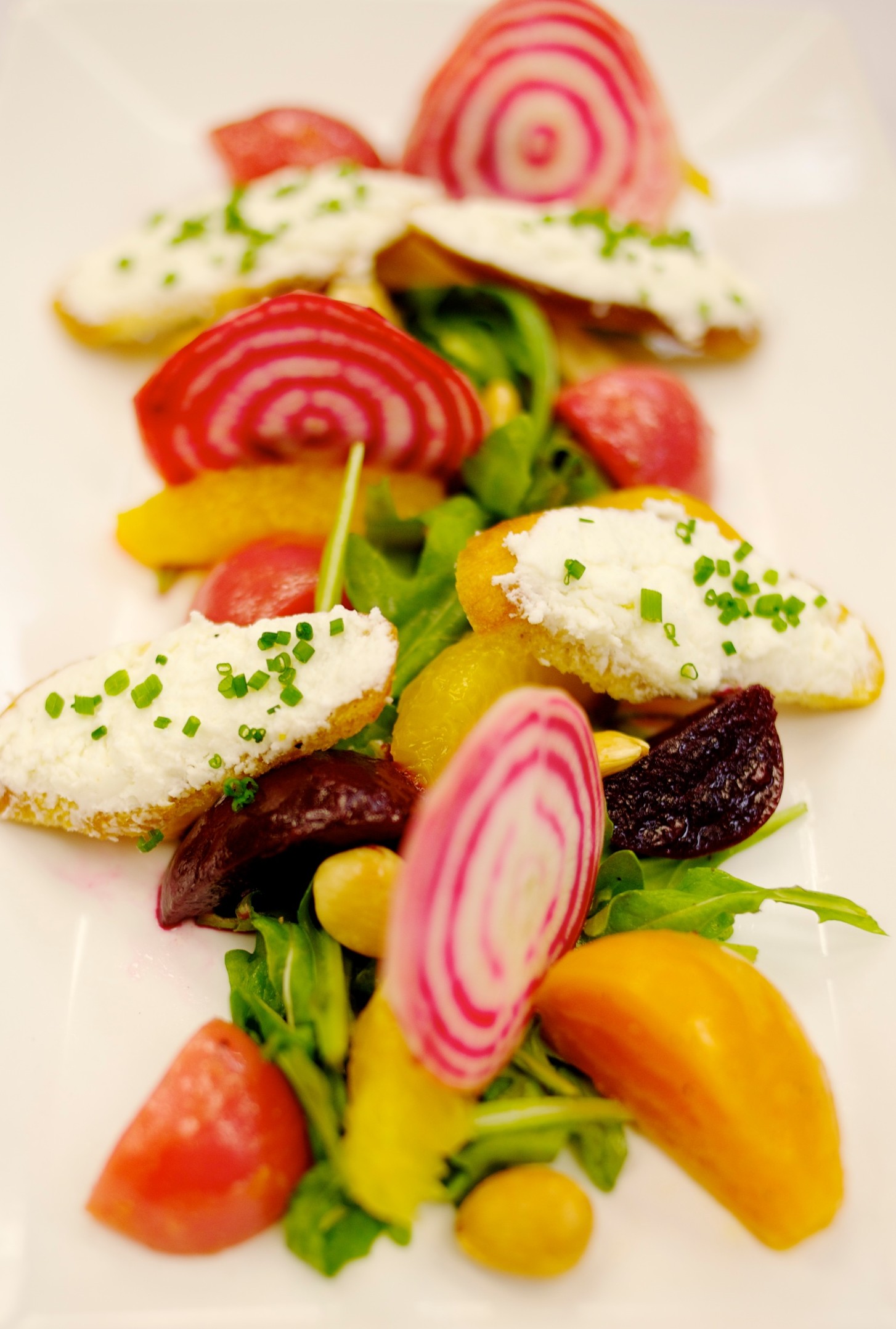
Favorite dining spots in Las Vegas? New York? Elsewhere?
In Vegas; Raku for sure, best restaurant in Vegas, any chef there will say the same. I love Monta also; it may be the best ramen I’ve ever had. Both those places are off the strip in Chinatown. In New York, there’s probably too many to mention, I love Talde in Brooklyn; the chef is a good friend and he does a really cool, upscale take on Asian street food. It’s a really cool spot. Momofuku Ssam is really unique and has awesome food. Since I love Mexican food so much, La Esquina is also a favorite; it’s no nonsense really good food and I love the vibe there.
What are your thoughts on culinary school? Is it worth the investment?
Yes, it’s worth the investment for sure. If you’re really committed, there’s plenty of culinary graduates that I meet that are out of the industry altogether or are waiting tables because they fell in love with the money and never went back to cooking. There’s a lot of chefs out there that say it’s not necessary, that you can still work up the ranks without the education, but I think it takes longer. I’m glad I went for sure.
Any advice for young cooks just starting out?
Practice cooking at home and read books, as many as possible, not just cook books, but books on food, food history, techniques. And eat out as much as possible, it’s all about exposing yourself to different foods and techniques.
Tim Maslow, Executive Chef at Ribelle and Strip T’s, Boston
Our friend Tim Maslow is an immensely talented young chef with heaps of accolades including a 2013 James Beard Rising Star nomination, 2012 Eater Young Guns Pick, Bon Appetit Magazine’s 50 Best New Restaurant list as well as a People’s Choice for Best Chef by Food & Wine Magazine.
He may be best-known for leaving the Momofuku empire after 6 years to transform his father’s Watertown, MA sandwich shop – Strip-Ts into one of Boston’s top restaurants. It’s well worth the trip to Brookline to check out his newest restaurant, Ribelle.
We’re happy to share a new video from Imbibe & Inspire, narrated by David Chang, showing Tim getting down to work with our Sakai Takayuki Sugihara Gyutou. Enjoy!
Grayson Schmitz – Consultant Chef
We had the pleasure of sitting down with Chef Grayson Schmitz recently to talk about how she got into cooking, what ingredients inspire her and favorite spots to eat in NYC.
How did you get started cooking initially?
My mom sat me down when I was 15 and asked me what I wanted to do with my life. She guided me through my talents; I’ve always been good with my hands, and wanted to do something physical. I looked up and Sarah Moulton was on TV and I said “What about being a chef?” It was either that or a masseuse. (Laughs)
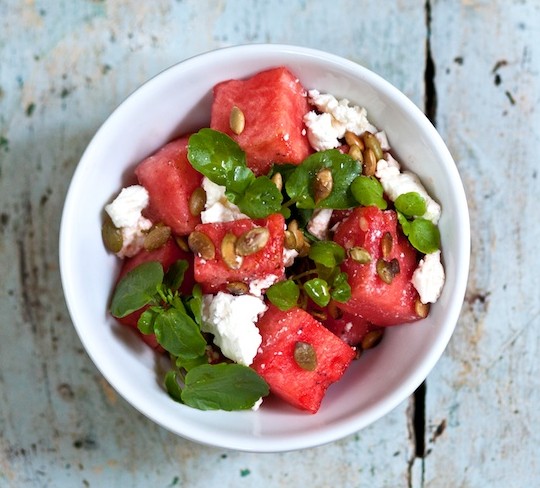
Then she took it into her hands and researched culinary schools. I knew I wanted the best, so we visited the CIA. In high school I worked at a Cooking School, for home cooks in Kohler, WI as the chef’s assistant. I learned how to talk to groups, how to make pasta and how to make all the mother sauces perfectly. My Chef took me to Paris for the first time. I also worked at a supper club down the road from my house. Before I had my driver’s license I’d drive my 4-Wheeler to work, real Sconnie style:)
What was your experience like at the CIA?
I was really focused on being the best. I called Jean George and started trailing there. I worked on weekends for months until I got an externship. I loved everything about it.
I feel certain restaurants are a match for people and Jean Georges was my perfect match. It was fun, professional, calm, militant. I worked there 4 years and gained a solid foundation on every station.
How important do you think a formal culinary education is?
I think it’s different for every person. For me, it was incredibly important. I came out of high school and didn’t know what grape-seed oil was. I needed that platform to excel off it. And at 18, I think it was invaluable to come to New York and have some sort of college experience.
That said, deep restaurant experience is essential for young cooks to build off what they learn in school.
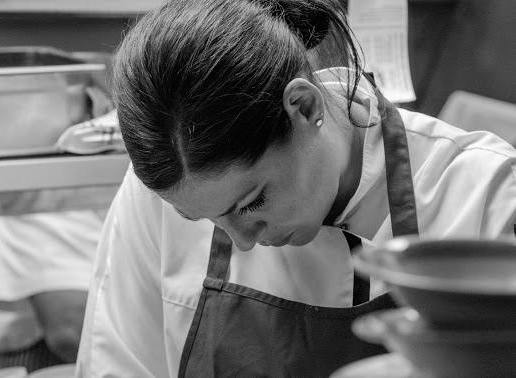
How would you describe your culinary style?
My style is heavily influenced by where I’ve worked. I took in French/Asian from my time at Jean Georges, I spent time in Italy and worked for Fabbio Trabocchi, and then did Austrian with Kurt Gutenbrunner at Wallse. My foundation is definitely European, not super – light, just umami delicious food.
What ingredients excite you right now?
I fucking love peas. Fresh English peas. When I was young, my friend’s family owned a hog farm and I have such happy memories of sitting in a field eating peas off the vine until we felt sick.
I’m also into all kinds of melons and heirloom tomatoes can’t be beat. A little Banyul’s vinegar, olive oil, salt. That’s all it needs.
Tell us a little bit about where you grew up.
New Holstein, Wisconsin is a little town of 2,000 people. I loved it. My sister always wanted to leave, but I never wanted to get out. It was idyllic, we spent our summers on Lake Winnebago in a house my great grandfather built. My aunt and uncle were next door, and my grandparents were on the other side. It’s a small town, Schmitz-Pauly family paradise. Home is my favorite place on earth.
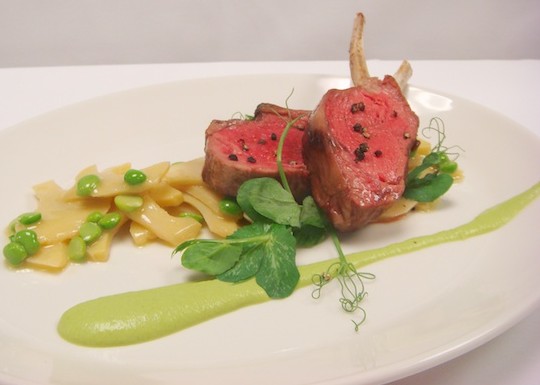
What’s the first thing you want to eat when you go back there?
Hands down, a Johnsonville Brat. I had no idea how German I was until I left there.
I know you’re a fan, but is there anything you want to say about Japanese knives?
I absolutely love them. When I was in school, it was all Wusthoff. That’s all I knew. When I went to Jean Georges, if you didn’t have a Japanese knife you were a loser. I remember the moment I got one. I took photos of it. Wrote about it in my extern book. In the kitchen we’d have contests to see who could get their knife the sharpest. Japanese knives really put the professionalism into our craft.
Favorite restaurants in NYC?
I always say ABC Kitchen, but I really love it and all of Jean Georges’ restaurants for that matter.
I also really like Mission Chinese. It’s a lot of fun and you can go with a group. It’s just a fun gathering spot that numbs your mouth.
I constantly go to Luke’s Lobster Roll too.
Are you tired of talking about what it’s like to be a woman in this industry?
Not at all. I think it’s really important for girls coming up to fully understand how stressful it is. Being on your feet 16 hours a day is incredibly taxing. Personally, I had to give it my all to stay in the game on top. If you don’t, you’re not respected and you can’t be the chef if you’re not respected. As a woman you have to work twice as hard, but once you’ve proven yourself, you’re all good.
Video Demo – How to Maintain and Flatten a Sharpening Stone
This is part three of our video series where we demonstrate the various sharpening techniques and tools essential to properly maintain your knives. In this video demo, we demonstrate the best way to maintain and keep your sharpening stones flat with a stone fixer.

